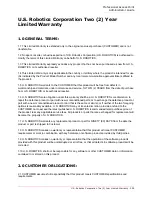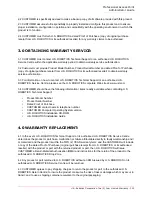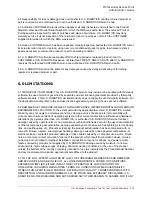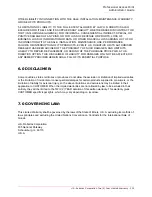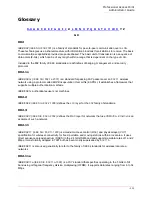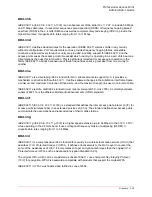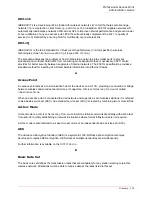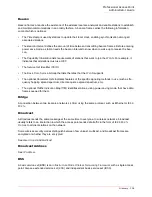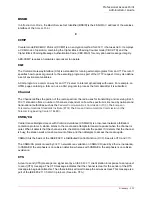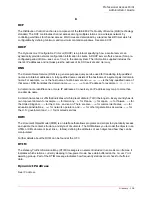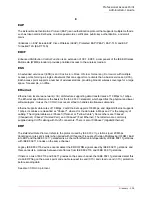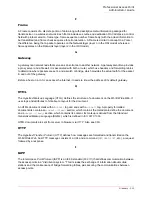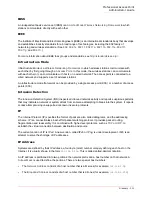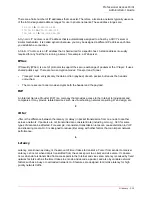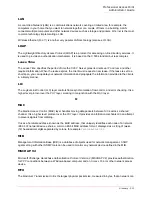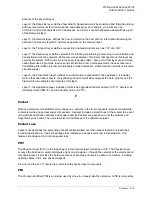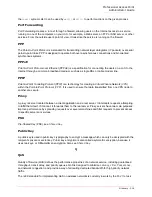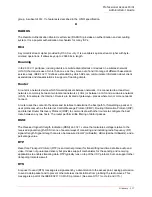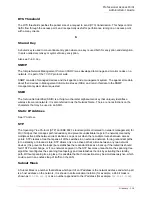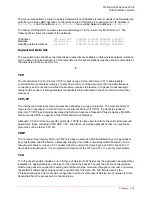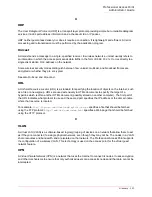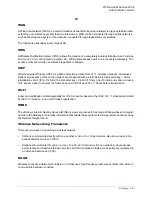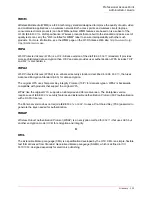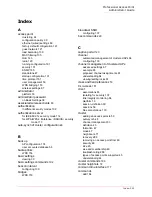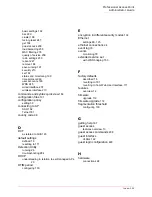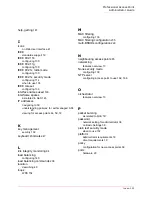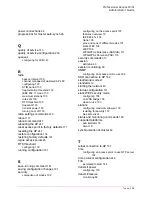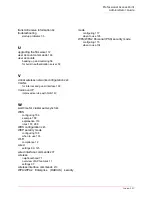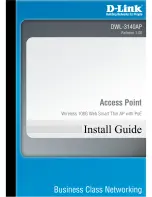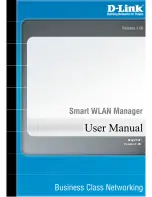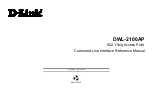
Professional Access Point
Administrator Guide
Glossary - 313
LAN
A
Local Area Network
(LAN) is a communications network covering a limited area, for example, the
computers in your home that you want to network together or a couple of floors in a building. A LAN
connects multiple computers and other network devices such as storage and printers.
Ethernet
is the most
common technology implementing a LAN.
Wireless Ethernet (
802.11
) is another very popular LAN technology (also see
WLAN
).
LDAP
The
Lightweight Directory Access Protocol
(LDAP) is a protocol for accessing on-line directory services. It
is used to provide an authentication mechanism. It is based on the X.500 standard, but less complex.
Lease Time
The
Lease Time
specifies the period of time the
DHCP
Server gives its clients an
IP Address
and other
required information. When the lease expires, the client must request a new lease. If the lease is set to a
short span, you can update your network information and propagate the information provided to the clients
in a timely manner.
LLC
The
Logical Link Control
(LLC) layer controls frame synchronization, flow control, and error checking. It is a
higher level protocol over the
PHY
layer, working in conjunction with the
MAC
layer.
M
MAC
The
Media Access Control
(MAC) layer handles moving data packets between
NIC
s across a shared
channel. It is a higher level protocol over the
PHY
layer. It provides an arbitration mechanism in an attempt
to prevent signals from colliding.
It uses a hardware address, known as the
MAC address
, that uniquely identifies each node of a network.
IEEE
802
network devices share a common 48-bit MAC address format, displayed as a string of twelve
(12) hexadecimal digits separated by colons, for example
FE:DC:BA:09:87:65
.
MIB
Management Information Base (MIB) is a database of objects used for network management.
SNMP
agents along with other SNMP tools can be used to monitor any network device defined in the MIB.
MSCHAP V2
Microsoft Challenge Handshake Authentication Protocol Version 2
(MSCHAP V2) provides authentication
for
PPP
connections between a Windows-based computer and an
Access Point
or other network access
device.
MTU
The
Maximum Transmission Unit
is the largest physical packet size, measured in bytes, that a network can
Summary of Contents for Instant802 APSDK
Page 1: ...Professional Access Point Administrator Guide R46 1224 00 rev 2 0 07 06...
Page 2: ......
Page 4: ...Professional Access Point Administrator Guide iv...
Page 8: ...Professional Access Point Administrator Guide viii...
Page 42: ...Professional Access Point Administrator Guide Basic Settings 42...
Page 52: ...Professional Access Point Administrator Guide Access Points 52...
Page 58: ...Professional Access Point Administrator Guide User Management 58...
Page 62: ...Professional Access Point Administrator Guide Sessions 62...
Page 70: ...Professional Access Point Administrator Guide Channel Management 70...
Page 88: ...Professional Access Point Administrator Guide Neighboring Access Points 88...
Page 96: ...Professional Access Point Administrator Guide Ethernet Wired Settings 96...
Page 120: ...Professional Access Point Administrator Guide Security 120...
Page 128: ...Professional Access Point Administrator Guide Virtual Wireless Networks 128...
Page 134: ...Professional Access Point Administrator Guide Radio 134...
Page 138: ...Professional Access Point Administrator Guide MAC Filtering 138...
Page 152: ...Professional Access Point Administrator Guide Quality of Service 152...
Page 160: ...Professional Access Point Administrator Guide Wireless Distribution System 160...
Page 164: ...Professional Access Point Administrator Guide Time Protocol 164...
Page 170: ...Professional Access Point Administrator Guide SNMP 170...
Page 290: ...Professional Access Point Administrator Guide Configuration Troubleshooting 290...
Page 298: ...Professional Access Point Administrator Guide Regulatory Information 298...
Page 328: ...Professional Access Point Administrator Guide Index 328...

